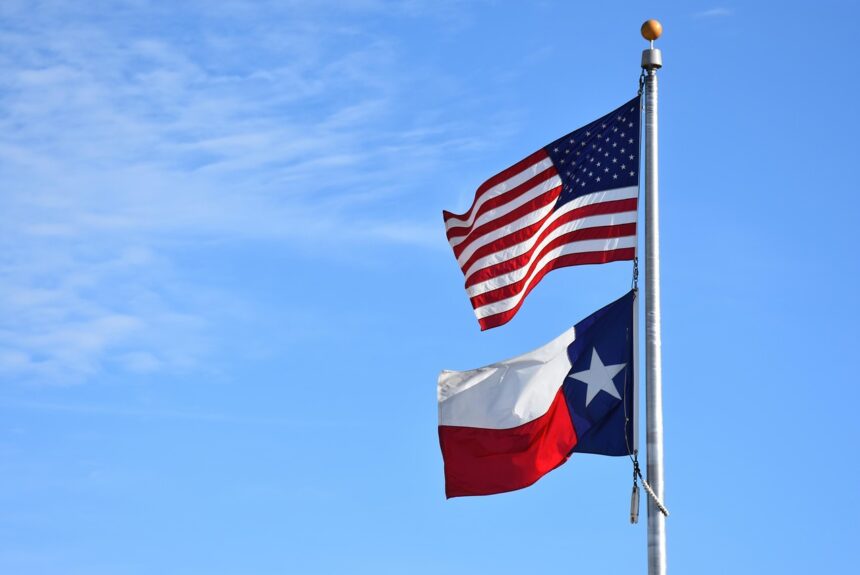Innovation, investment, and the cleanest possible energy production thrive best in freer markets that encourage competition instead of having politicians pick winners and losers. That, in a nutshell, is the lesson of the latest Free Economies are Clean Economies report.
Measured by private property rights, business, labor, trade and monetary freedom, and government size and integrity, more economic freedom generates more wealth for people and societies, leading to a more flourishing environment. Without economic freedom, people, societies, and the environment all suffer.
Consider how that works in a fast-growing American state. “Texas is a big state blessed with abundant natural resources and ideal conditions for renewable power,” Rep. Jodey Arrington (R-TX) wrote in a foreword to this year’s Free Economies are Clean Economies report. “Ask yourself: Would you rather have the U.S. economy or one like China, Russia, Mexico, or Haiti? Would you rather have the environmental quality of Switzerland or Venezuela?”
The Texas Congressman’s rhetorical question makes the point. Like Texas, environmentalists should promote economic freedom. Innovation, investment, and energy production thrive best in freer markets that encourage competition rather than markets where politicians pick winners and losers.
Contrast that with China. The Chinese Communist Party (CCP) wants to position itself as a leader in clean energy. It has vowed to bring CO2 emissions down sharply and has invested in clean energy production. But that’s a smokescreen. If there’s anything that’s a hoax about climate change, it’s China’s policies. In other words, China is the real climate hoax.
Much of China’s investment has more to do with dominating markets than improving the environment. As the International Energy Agency reported last year, China makes more than 80 percent of the world’s solar panels and their components (such as polysilicon, ingots, wafers, cells, and modules). That’s more than double what the country would need to make for its domestic use.
By dumping all that excess equipment on the global market, China has driven manufacturing in other countries out of business and created a level of dependency that benefits Beijing politically. As long ago as 2012, China poured $35 billion into solar subsidies, chasing American makers into bankruptcy. It’s spent tens of billions in the years since, even as many governments, especially in Europe, mandate the use of solar and wind. They have had to turn to China to obtain those solar panels or wind turbines, further cementing its advantage. These unfair trade practices amount to market manipulation and modern mercantilism.
Freedom is the key to a cleaner environment, of course, not the government picking winners and losers based on how some politicians want to define ‘clean’.
Our current Secretary of Energy, Chris Wright, understands this well. As he wrote in a previous edition of our Free Economies are Clean Economies report, “There is no such thing as ‘clean’ energy or ‘dirty’ energy. All energy sources have positive and negative impacts on humans and the environment.”
Now-Secretary Wright wrote that “Evaluating the tradeoffs in energy systems requires thoughtful analysis in the context of local conditions, values, and needs. It also requires energy from free markets: allow people to make decisions about their own energy future without subsidizing or constraining one form of energy over another.”
Meanwhile, the CCP is not even close to practicing what it preaches about using “green” energy. China’s use of solar and wind dropped at the end of 2024, while its use of coal continues to grow, providing more than half of the energy used in China each year. As C3 recently wrote in a report, China is no green energy darling.
>>>READ: New C3 Solutions Report: China is No Green Energy Darling
Here at home, cleaner American coal provides less than 10 percent of our energy, and thanks to our abundant natural gas, our domestic greenhouse gas emissions are plunging. That’s true across the board, but especially for methane emissions, which have dropped almost 20 percent in recent years. China’s CO2 emissions jumped nearly 4 percent annually in 2021, 2022, and 2023, even as its GDP growth slowed.
Simply put, China is less energy efficient. China uses roughly 20 percent more energy to produce a unit of GDP than the United States does.
China’s climate hoax doesn’t stop there. The CCP also wants to corner the market on the supply chain, particularly the rare earths that will be needed to build a clean energy infrastructure.
Rare earth elements (REE) are essential to many sectors of our economy, including renewable energy, manufacturing, and defense equipment. China supplies about 80 percent of our REE, and that near-monopoly gives Beijing even more leverage over the “green” economy.
Two years ago, a House Select Committee recommended that “Congress should incentivize the production of rare earth element magnets, which are the principal end-use for rare earth elements and used in electric vehicles, wind turbines, wireless technology, and countless other products.”
That means more mining here at home and more deals with friendly nations, including Brazil and Australia, which are traditional trading partners with plenty of access to REE. President Trump can help here by cutting red tape that limits U.S. mining and refining and building stronger alliances with countries that share our free market values.
So, don’t look to China’s failing policies, which are paraded as a cleaner climate future. That is the real climate hoax. Look here—at America, states like Texas, and our freedom-loving allies around the world—for the best climate solutions.
Let freedom ring, and people and the planet will flourish.
The views and opinions expressed are those of the author’s and do not necessarily reflect the official policy or position of C3.
